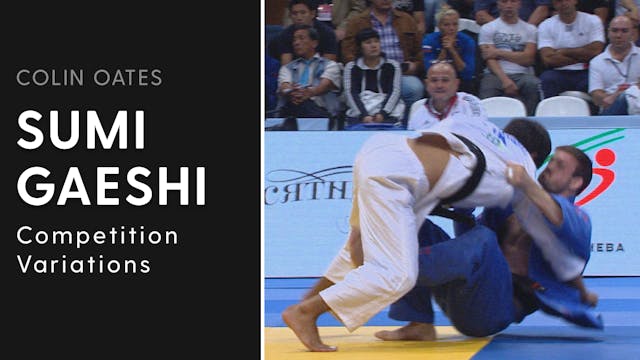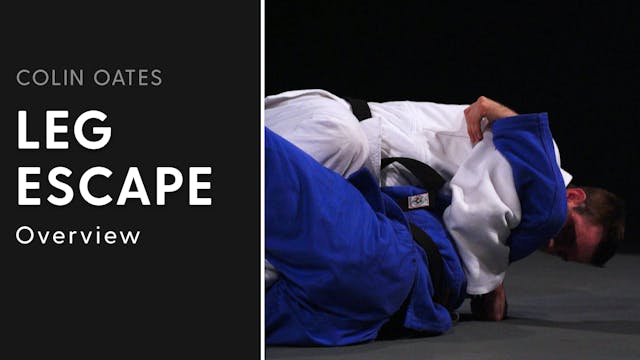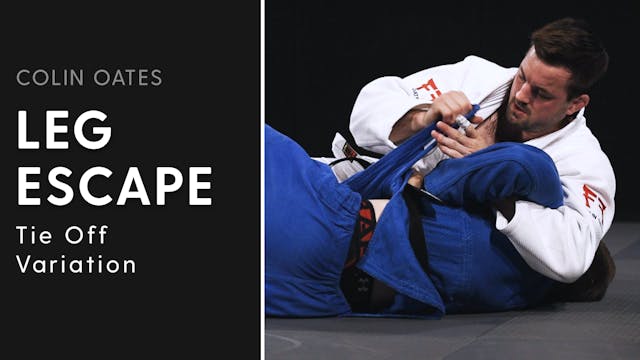As with all of Colin Oates’s Sumi gaeshis, momentum is absolutely critical and it’s no different when it comes to his Uchi mata – Sumi gaeshi combination. Oates pre-plans this combination against opponents who are defensively strong against his Uchi mata.
The Uchi mata, however, must come with genuine commitment to throw. It’s the defensive reaction from the partner that generates the momentum into the Sumi gaeshi. As Oates attacks with Uchi mata, Uke braces defensively. Their shift in stance and body weight lends itself perfectly to the direction of Oates’s Sumi gaeshi. He describes it as the pendulum effect.
Here, Oates shows the entry to his Uchi mata and the direction in which he is driving his partner. This is the start of the pendulum effect, which gets the partner rocking diagonally forwards from the Uchi mata. As Oates exits the Uchi mata his opponent shifts their weight backwards and to the right.
This is their natural defensive reaction to having felt the Uchi mata and not wanting to be thrown with it. But it plays perfectly into Oates’s hands, who is able to employ his most effective technique of the lot. The power in this combination comes from the hips and legs.
His grips are the same as his standard variation. The only thing that differs is the omission of the foot movement pattern, which doesn’t come into play as the momentum has already been generated.
From the reverse angle here is a great demonstration of the pendulum effect.
So here it is when it all comes together. Oates points out that the transition between the two techniques must be instantaneous, as you don’t want to give your partner time to settle and reset their posture.
It’s vital to generate momentum and then use it. This is a great way to combine two very different techniques.
Up Next in Watch All
-
Competition Variations | Sumi Gaeshi ...
In this clip we look at how Colin Oates used his Sumi gaeshi at the world’s biggest competitions.
At the 2011 Qingdao Grand Prix Oates uses a belt grip to score Yuko and win in Golden Score.
On his way to winning the bronze medal at the 2014 Samsun Grand Prix Oates grips deep over his opponent’...
-
Overview | Leg Escape | Colin Oates
Colin Oates used Sumi Gaeshi not only as a way to score from standing, but as his primary method of initiating Newaza. His leg escape into Mune Gatame worked hand-in-hand with his Sumi Gaeshi. So much so that Oates would regularly attack with Sumi Gaeshi with the intention actually being to set-u...
-
Tie Off Variation | Leg Escape | Coli...
Sometimes Colin Oates’s opponents would catch the leg far too tightly for him to free it in his usual manner. So he developed a tie off variation of his leg escape into Mune Gatame, so that he wasn’t trying to free the leg using his lower body alone.
If the partner has managed to keep a tight gr...



